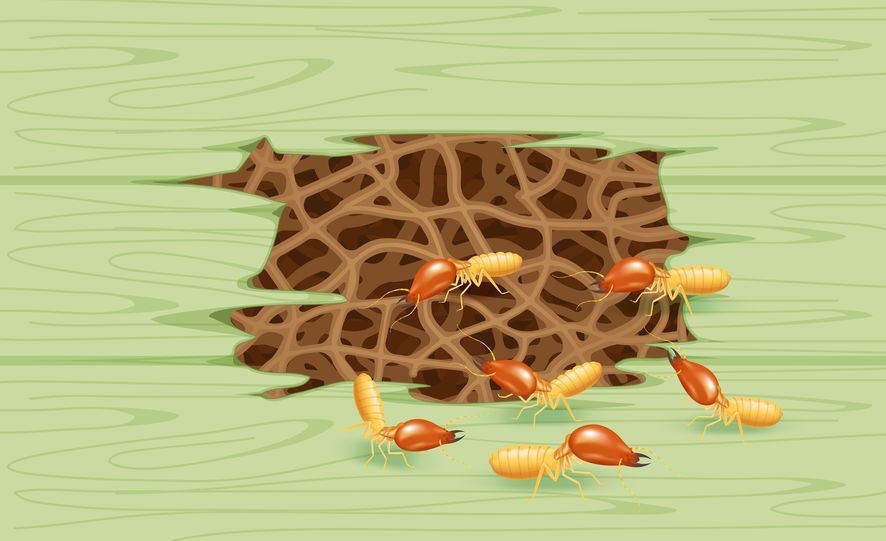Gordon B. Hinckley, the famous American author, once said, “You can’t build a great building on a weak foundation. You must have a solid foundation if you’re going to have a strong superstructure.”
When it comes to termites, the strong foundations of your home acts as the first line of defense against termite infestation. Termites are “silent destroyers” that can chew through wood, drywall, wallpaper, and even flooring. Anything that contains cellulose is a target for these pests.
But don’t termites feast on wood?
If you fall into the category of homeowners who believe that brick house is immune to termite infestations. Well! We are sorry to burst your bubble. These wood-destroying insects can penetrate your brick or concrete house.
Yes! You read that right.
Living in a brick house doesn’t ensure your safety from this destructive pest infestation. Termites cannot walk through solid brick walls but can easily make way to your house through the minuscule cracks in the mortar to get access to the wood in your home. Even the worn-out weather-stripping surrounding windows and doors can be an access point for termites.
Termite Inspection in your brick home
The presence of termites in brick homes often goes unnoticed because of the myth that termites only much on wood. And, by the time reality hits you, the damage is already done. Pest inspection in and around your brick home will help you in termite prevention. Let’s explore how termites sneak into your brick or concrete home.
- Brick Veneer: Most modern brick homes are built with brick veneers, a decorative finishing to the interior wooden frames. In other words, the brick is applied only to the surface instead of vinyl or wood siding along with a wood frame. When moist soil contacts the edge of the brick veneer, the termites find it easy to access wood underneath by traveling behind the veneer. A simple way to avoid this situation is by maintaining a space of at least four inches between the brick veneer and any moist soil-like materials.
- Concrete Slabs: Astonishingly, concrete slabs are highly vulnerable to termite invasions because the space underneath the slab is wet and dark, a perfect thriving environment for termites. They can make an entry through any holes and spaces, left open for plumbing, electrical wiring, utilities, and through expansion joints in the concrete. Sealing all entry points and keeping water away from your foundation can reduce the risk of infestation.
- Structural Brick: Compared to modern homes, conventional homes are mostly built with structural bricks. Here, the walls are supported solely by the bricks and not just with wooden frames. Even though these structural bricks are thick, they have interior plaster over the wood lath attached directly to the masonry without any space or insulation. This helps termites to enter inside your home.
How to Prevent Entry of Termites in Your Brick Home?
The best way to avoid termite damage in your brick home is to prevent the entry of termites. As a homeowner, you can follow these steps to prevent termites:
- Avoid stacking firewood near your home – keep the woodpiles at least 25 feet away.
- Repair all cracks, leaks, and moisture issues immediately.
- Use treated wood for building gazebos, decks, sheds, etc.
- Get a regular termite inspection done by professionals.
Wrapping Up
Regardless of the kind of home you have, termite prevention is crucial. The easiest way to protect your home from termites is by blocking their entry. If they manage to slip in, don’t try D-I-Y solutions to eliminate them because as it can get messier. It is best to call pest control professionals to inspect the presence of termites and eradicate them.
Did You Know? According to the National Pest Management Association, it is estimated that termites cause an annual damage of $5 billion to your property.

